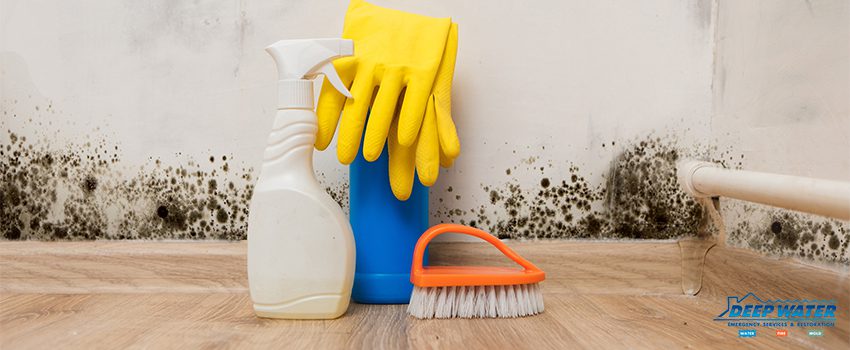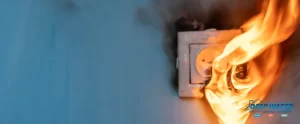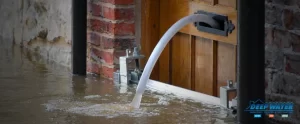Molds grow on plants, food, fabric, paper, and inside your house.
As part of our ecosystem, we can practically find molds everywhere. While it is beneficial in breaking down organic materials, molds in houses are a significant concern. They can cause damage to household materials, nasty smells, respiratory problems, and trigger allergies. Stachybotrys chartarum or black molds are more alarming because of their link to severe illnesses such as acute idiopathic pulmonary hemorrhage common to infants.
How Can They Cause Problems
Molds are not welcome in any house. From the outside, they reproduce by releasing floating spores that can land in a favorable environment. This method is one way for them to enter through the windows, fabric clothing, shoes, doors, pets, and HVAC units.
Once they have found the perfect damp areas, they form new molds. Molds quickly breed when you have leaks in your roof, backed-up sewers, flood, damp areas, overflowing bathtub and toilet, plumbing problems, and high levels of humidity.
Molds spreading throughout your house is bad news because it causes two major problems:
- Household materials: It eats away drywalls, wallpapers, carpets, ceilings, and floorboards. Though it does not happen overnight, untreated molds for a long time sometimes cause unattainable repair.
- Health: Causes difficulty in breathing, nasal congestion, frequent sneezing, coughing, rashes, itchy throat, irritated skin and eyes, and asthma attacks. It also increases the risk of infection for people with a compromised immune system and those struggling with cystic fibrosis and chronic obstructive pulmonary disease.
Where to Check for Mold in Houses
Where does mold or black mold grow in a house? The simple answer is, you can find it in any damp area in your house.
If you experienced flooding, noticed peeling of wallpapers, a sudden feeling of flu-like symptoms or perhaps, smelling something nasty, it is time to check these seven common areas that are conducive to mold growth.
1. Bathroom
The warm and wet environment of the bathroom invites mold to grow, particularly if you do not have proper ventilation, such as windows and fans.
- In the shower: Shampoo bottles, shower curtain, shower head, faucet, tile grout
- In the sink: Toothpaste, toothbrush holder, soap container, underneath the sink
- In the toilet: Behind the toilet, toilet tank, pipes, cleaning supplies
- In the walls and floor: Bathroom rugs, peeling wallpapers
2. Kitchen
Piled-up dishes, leftovers, hot water running, and humidity from the stove contribute to mold growth.
- In the kitchen sink: Wet sponges, garbage disposal, faucets, leaky pipes underneath
- In the refrigerator: Expired food, drip trays, water dispenser
- In the microwave: Spilled food, greasy splatters
- Cutting boards, behind the stove, trash cans
3. Bedroom
Despite controlled humidity inside the bedroom, checking all indoor spaces should also be part of your cleaning protocols.
- In the mattress
- In the window and window sills
- In the heating and air condition units
4. Living Room
While having snacks in front of the TV is fun and household plants are relaxing to see, it also paves the way for the molds to grow.
- On the couch and curtains
- In the plant pots
- In the fireplace
5. Walls and Ceilings
Molds easily hide under the surface of your walls and ceilings. Do not attempt to peel it off yourself when you see it peeling off. Untrained hands could only release the spores more.
6. Home Appliances and Items
- Carpet and Upholstery: By trapping dirt and dust, carpet pudding can be a breeding ground for molds in the house.
- Filing Cabinet: If you experienced water damage or high humidity, molds could grow in your paper.
- Washing Machine: As this uses water, it is a potential place for molds to grow, especially if you keep wet clothes inside.
- HVAC units: HVAC units need regular maintenance because they regulate the air inside the house. Address any leak found in the AC units immediately.
7. Garage and Basement
Storage areas in your garage and basement are usually dark. When there are leaks in the roof, molds can easily penetrate. Check cleaning materials, spaces where things are not often moved, around pipes and ducts, and in the sump pump.
How to Test for Mold in House
Most molds are visible. You can see their velvet and fuzzy appearance with either white, yellow, black, or green color. They sometimes look like a stain and discoloration.
If you suspect a spot yet are unsure whether it is a mold or dirt and you experience symptoms associated with molds, you may run a test with:
- Bleach and Water: Dilute bleach and water with a 1:16 ratio and dab on the wall. If the spot lightens and keeps on returning, it is a mold.
- Screwdriver: Check if the wood is soft or it is crumbling. If it does, molds have infested it.
- Test Kits: Follow the instructions when collecting samples into a petri dish. If there is no growth seen after 48 hours, wait for another 24-48 hours. However, testing for black molds needs to be sent and verified in a laboratory.
How to Prevent Molds
Here are some tips that help keep molds away from your house.
- Use an exhaust fan while taking a bath. Keep it going for at least 30 more minutes after showering.
- Use a dehumidifier to keep levels down; ventilate while cooking.
- Keep all surfaces dry and clean, including gutters.
- Always check and address any leaks.
- Regularly change sponges.
- Remove food stored for a long time and clean drip trays.
- Invest in a mold-resistant mattress.
- Immediately clean up the large spills on the carpet and let it dry thoroughly.
- Do not keep wet clothes in the washing machine and keep the washer door open when not in use.
- Regular maintenance of HVAC units to prevent spreading of spores throughout the house.
Call the Experts
Do not risk your health and the integrity of your structure.
When you see molds growing, it is time to call Deep Water Emergency Services for mold mitigation. Offering not just mold mitigation, we provide water damage mitigation in Denver, CO, essential in mold growth prevention. With more than two decades in the industry and being an IRCC-certified and BBB-accredited, we at Deep Water Emergency Services know exactly how to find hidden mold in your house and how to treat it efficiently. With the right tools and industry-approved protocols, our team expertly diagnoses and handles the worst mold infestations.






